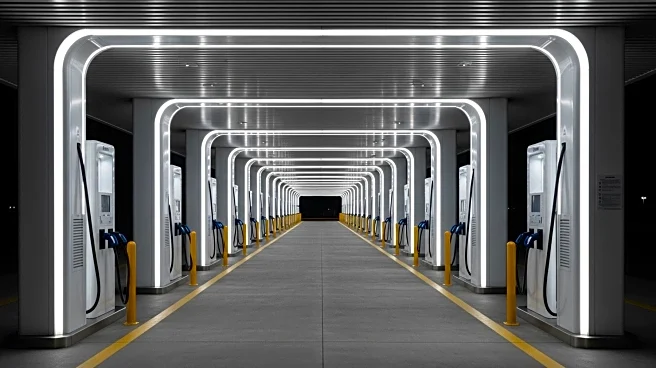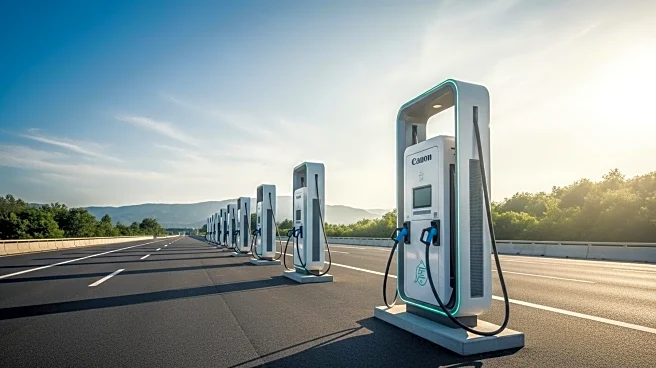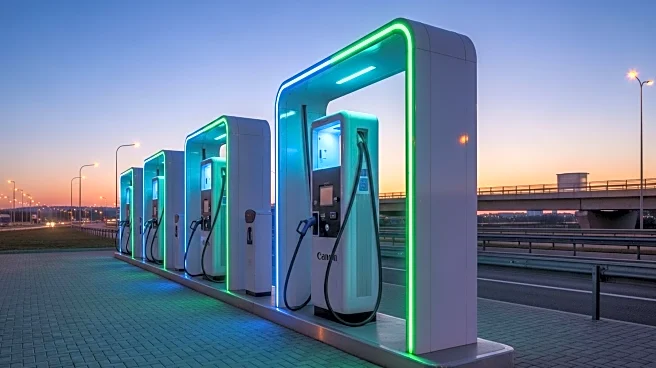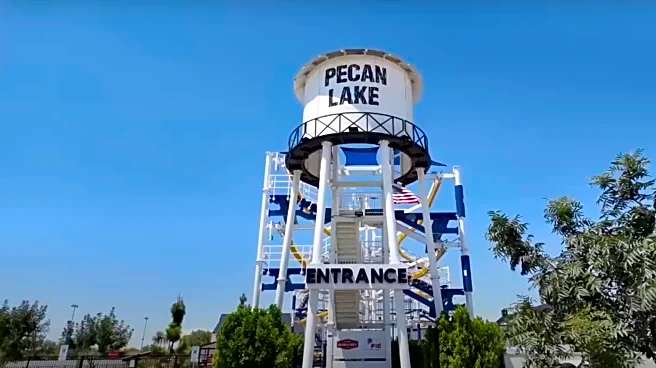What's Happening?
Greenlane, a joint venture between Daimler Truck, NextEra Energy, and BlackRock, has announced the development of a second electric vehicle charging corridor. This corridor will connect Southern California to Arizona, leveraging Greenlane's existing flagship station in Colton, California. The site is equipped with 40 high-speed chargers, 12 pull-through lanes, and 29 bobtail lanes designed for medium to heavy-duty electric vehicles. The corridor aims to facilitate long-haul electric trucking, validated through successful single-charge journeys from Colton to Phoenix. The initiative is part of Greenlane's broader strategy to expand its network of commercial EV charging stations for medium and heavy-duty fleets.
Why It's Important?
The establishment of this corridor is a significant step towards reducing emissions in the freight industry, which is a major contributor to greenhouse gases. By providing infrastructure for electric trucks, Greenlane is supporting the transition to zero-emission freight operations. This move is expected to benefit carriers and shippers by offering a reliable charging network, thus encouraging the adoption of electric trucks. The corridor also represents a strategic investment in sustainable transportation, aligning with broader environmental goals and potentially influencing policy and industry standards.
What's Next?
Greenlane plans to continue expanding its network of charging corridors, with several routes in development. Windrose Technology, an electric truck OEM, plans to manufacture 2,000 electric trucks by 2026 and scale up to 10,000 by 2027 globally. This expansion could lead to increased adoption of electric trucks, further reducing emissions and transforming freight operations. Stakeholders, including carriers and shippers, are likely to monitor the corridor's performance closely, potentially influencing future investments in electric vehicle infrastructure.
Beyond the Headlines
The development of electric truck corridors may have broader implications for the logistics industry, including changes in supply chain dynamics and operational costs. As electric trucks become more viable, companies may need to adapt their logistics strategies to incorporate new technologies and infrastructure. Additionally, the shift towards electric freight could drive innovation in battery technology and charging solutions, further advancing the industry.













